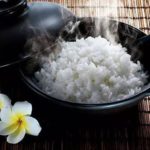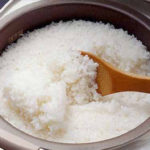Cooking rice has become extremely easy since the electric rice cooker was invented. However, sometimes there are issues with cooking rice using this device. “What are the reasons why the rice cooked with an electric rice cooker is undercooked” is the question that arises in this situation.
Reasons why the rice cooked with an electric rice cooker is undercooked:
There are quite a few reasons why rice cooked with an electric cooker is undercooked, and it’s not just because of your cooking technique.
Unstable power source:
Sometimes we put the rice pot in the electric cooker, turn on the cooking button, but forget to check if the electricity is on or not, if the power jack is stable, or if the indicator light on the cooker is on. The undercooked or uncooked circumstance may be due to an unstable power source or unstable wiring.
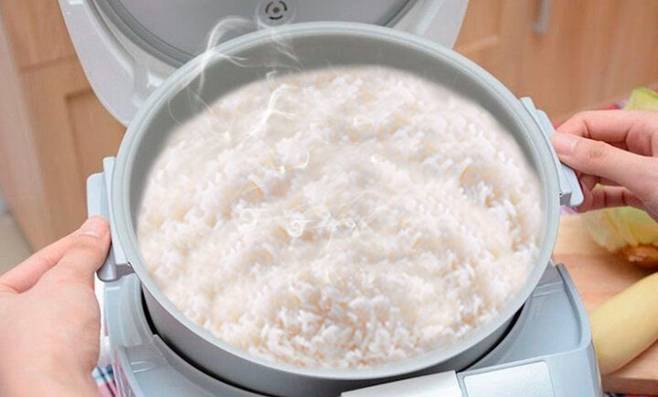
An unstable power source, a dented rice pot bottom, a faulty temperature relay… are the reasons why the electric rice cooker cooks the rice undercooked. (Image: MediaMart)
For example, if the electrical wiring inside the rice cooker is broken, this can lead to insufficient power supply for cooking the rice. Another case is when you plug it in, the indicator light is on but the cooker doesn’t heat up, it may be due to a blown fuse or a faulty switch.
Malfunctioning temperature relay:
Usually, the temperature relay switches from the cooking mode to the warming mode when the rice grains are evenly cooked, and all you need to do is wait for the appropriate time to let the rice settle and steam completely.
In some cases, excessive heat causes the temperature relay to switch to the warming mode prematurely, while the rice grains are still not fully cooked. The sudden decrease in temperature results in undercooked or uncooked rice. You should bring the cooker to warranty services or repair centers where technicians can replace the temperature relay for you.
If you don’t have sufficient knowledge about the electric rice cooker, it is not recommended to replace the temperature relay by yourself at home.
Insufficient water amount:
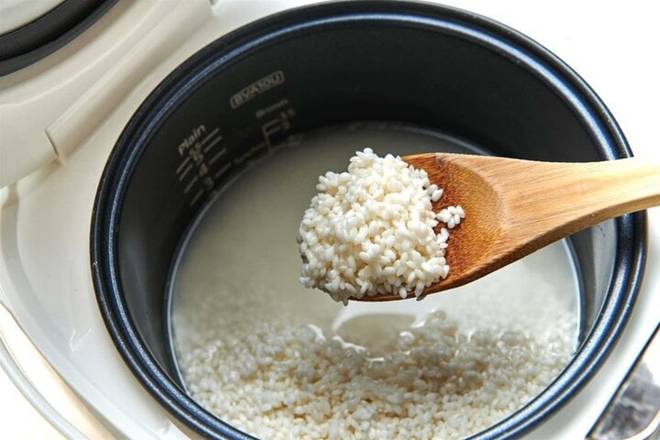
What are the reasons why the rice cooked with an electric rice cooker is undercooked? Insufficient water amount might be one of the reasons. (Image: Sunhouse Group)
This is one of the fundamental reasons that leads to undercooked or uncooked rice. The rice grains need to be soaked in an adequate amount of water in order to cook properly. In case you use too little water, the rice grains become dry and hard, resulting in undercooked or uncooked rice.
Depending on each type of rice, you need to measure the appropriate amount of water to cook the rice. Most electric rice cookers provide water level markers on the inner pot, and you need to pay attention to allow the rice to cook until soft and fully cooked.
Dented bottom of the rice pot:
In order for the rice to cook properly, the bottom of the rice cooker pot needs to be evenly in contact with the heating plate to transfer heat to the rice. If the bottom of the pot is dented or warped, the cooked rice will be undercooked or uncooked and not evenly cooked. There is no way to fix this issue except by returning or exchanging the rice cooker if it is still within the warranty period, or buying a new electric rice cooker.
A curved bottom of the pot can reduce the contact area between the pot and the heating plate, resulting in insufficient heat to cook the rice evenly.
Tips for cooking delicious rice:
Cooking rice is very simple, but in order to have delicious rice and retain its nutritional value, cooking must be done correctly.
Soak the rice before cooking:
Soaking the rice in water before cooking helps soften the rice grains and the rice will be cooked evenly. You should soak the rice for 30 minutes to 1 hour before cooking.
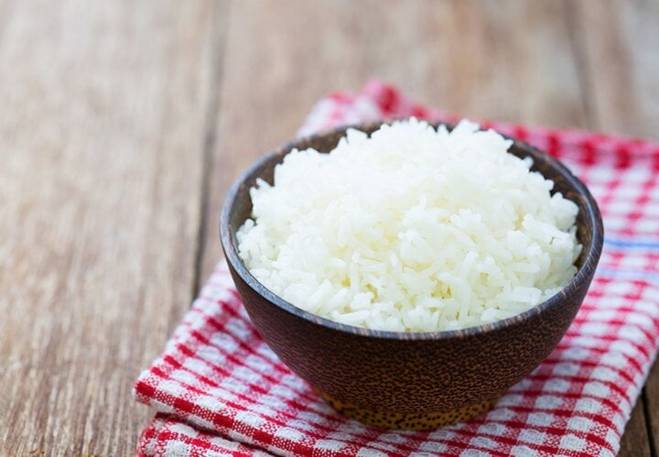
Tips for cooking delicious and nutritious rice. (Image: Good Housekeeping)
Rinse the rice properly:
Vitamin B1 is mainly found on the surface of rice grains, excessive rinsing of rice while cooking will result in the loss of nutrients. You should only rinse the rice 1-2 times to remove dirt. Many people have the habit of rinsing the rice 4-5 times until the remaining water becomes clear, which is a mistake to avoid.
Add the right amount of water:
Adding too much or too little water can make the rice sticky, dry, or unevenly cooked. You need to add just enough water for the rice to be soft and delicious. Each type of rice requires a specific amount of water. Therefore, when you buy a new type of rice, you should test it first. For 500 grams of rice, you should pour 600 ml of water into the pot, then adjust gradually to find the right amount.
Cook rice with hot water:
When cooking rice with hot water, the outer layer of the rice grains will contract, forming a protective layer that prevents the rice grains from cracking and helps retain the nutrients. This method also shortens the cooking time, making the rice cook faster; furthermore, it helps save electricity during the cooking process.
Do not open the lid frequently:
Opening the lid multiple times during cooking can lower the temperature and cause a loss of steam necessary for cooking the rice properly. You should only open the lid when necessary or when the rice is fully cooked. When you open the rice cooker, the rice grains will be exposed to the air, which is detrimental to the vitamins in the rice.
Source: VTC news
An unstable power source can cause fluctuations in the electricity supply to the rice cooker. This may result in the cooker not receiving enough power to function properly, leading to undercooked rice. Additionally, unstable wiring can also cause similar issues.
The temperature relay is responsible for switching the cooker from cooking mode to warming mode once the rice is evenly cooked. However, if the temperature relay malfunctions, it may switch to warming mode prematurely, resulting in undercooked rice due to insufficient heat.
Insufficient water is a common reason for undercooked or uncooked rice. Rice grains need to be soaked in an adequate amount of water to cook properly. Using too little water can lead to dry and hard rice grains.
Yes, a dented or warped bottom on the rice pot can affect the cooking process. The bottom of the pot needs to be in even contact with the heating plate to transfer heat evenly to the rice. A dented bottom can reduce the contact area, resulting in insufficient heat and unevenly cooked rice.
Quick Tip: How to Fix Stale, Mushy, and Sticky Rice
If you’re facing issues while cooking rice, such as overcooked or mushy rice due to excess water, or if you’re using a new type of rice and unsure about the water ratio, resulting in hard rice, or if you accidentally applied too much heat and ended up with burnt rice, don’t worry! There are simple ways to tackle these problems.
Tips: How to fix hard, sticky, and mushy rice?
When cooking rice, if the water is too much, the rice becomes mushy or when switching to a new type of rice, if you don’t know how to measure water, the rice becomes hard, or if you don’t control the heat well, the rice becomes burnt. Don’t worry, here are some simple methods to help you handle these situations.


























